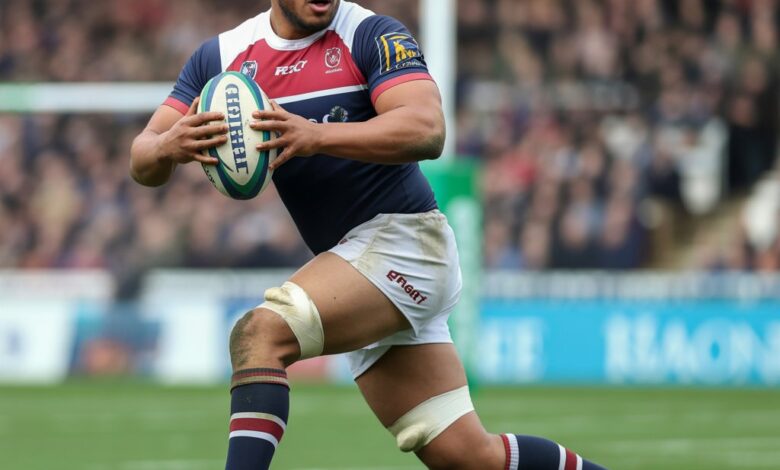National League One Rugby: Complete Guide to England’s Semi-Professional Rugby Tier

In the world of English rugby union, National League One Rugby plays a pivotal yet often underappreciated role. Positioned as the third tier of the English rugby pyramid, it functions as a gateway between the professional and amateur levels of the sport. While it might not receive the same attention as the Premiership or Championship, this league is the engine room where local passion meets elite ambition. Comprising teams from across England, National League One is home to some of the country’s most historic and fiercely competitive clubs. Each season, these clubs compete with tenacity, not just for league titles or promotion, but for survival, growth, and the right to represent their regions at higher levels of the game.
Understanding National League One Rugby and Its Place in English Rugby
National League One Rugby is governed by the Rugby Football Union (RFU) and forms the third level in England’s rugby union structure. The league features 14 clubs from various regions across the country. These teams are semi-professional or in some cases part-time professional, providing a vital bridge between full-time professional clubs in the RFU Championship and community-rooted teams in National League Two. The league operates on a double round-robin format, meaning each team plays the others twice during the season — once at home and once away — totaling 26 matches. The points system encourages competitive play: four points for a win, two for a draw, and bonus points for scoring four or more tries or for losing within seven points.
National League One is more than a competition; it’s a proving ground. Many players who rise to Premiership or international rugby often spend seasons honing their craft in this league. It’s also where former professionals extend their careers while mentoring up-and-coming talent, blending experience and hunger on the pitch in compelling ways.
Promotion, Relegation, and Competitive Intensity
The promotion and relegation system in National League One ensures that no season is ever dull. The team finishing first in the table is promoted to the RFU Championship, provided they meet facility and financial criteria. This promotion is not just a boost in status — it often comes with higher exposure, tougher competition, and increased commercial opportunities. However, with reward comes risk. At the opposite end of the spectrum, the bottom two or three teams are relegated to National League Two North or South, depending on their geographical location. Relegation can be financially and emotionally challenging for clubs, leading to budget cuts, reduced player rosters, and potential declines in supporter attendance.
This system creates a constant sense of urgency throughout the season. Clubs cannot afford complacency. Whether fighting for the top spot or battling to avoid the drop, every fixture is crucial. This urgency fosters a uniquely passionate atmosphere at matches and encourages clubs to continually strive for higher standards, both on and off the field.
Clubs, Culture, and the Community Behind the Game
One of the most defining features of National League One Rugby is its strong connection to local communities. Clubs in this league often represent towns or suburbs with long rugby histories. Teams like Rosslyn Park, Blackheath, Chinnor, and Cinderford are steeped in tradition and play vital roles in promoting the sport locally. These clubs rely on community support, grassroots engagement, and regional pride, making each game a local event as much as a sporting contest. Matchdays draw families, former players, school teams, and loyal fans who return week after week.
The clubhouses are more than just hospitality areas — they are gathering places for social activity, post-match analysis, and lifelong friendships. Players in National League One are often involved in coaching youth teams, mentoring students, or even working day jobs within the same communities they represent. This closeness makes the league not just a stepping stone for professional ambitions, but a reflection of rugby’s enduring values: camaraderie, respect, and resilience.
Challenges and Financial Realities
Despite its strengths, National League One Rugby faces significant challenges that threaten its sustainability. Financial stability is a major concern. Clubs operate on limited budgets and rarely benefit from major sponsorships or broadcast deals. Travel costs, player salaries, medical support, and stadium maintenance must all be funded through gate receipts, local sponsors, and community fundraising. The semi-professional nature of the league also presents dilemmas: players must balance training and matches with full-time jobs or academic commitments, often leading to strain on both their performance and well-being.
Another concern is visibility. Unlike the top two divisions, National League One rarely receives television coverage or extensive media attention. This limits its commercial reach and makes it harder to attract new fans or long-term investors. Despite these hurdles, many clubs are getting creative with live streaming, social media marketing, and local partnerships to grow their reach and secure their futures.
Looking Ahead: The Future of National League One Rugby
The future of National League One Rugby depends on adaptability and support. There are growing conversations within the RFU about financial aid, better media coverage, and grassroots investments to support lower-tier rugby. Some clubs are pushing for streaming deals to reach wider audiences, while others are building stronger ties with local schools and businesses. If these efforts succeed, National League One can continue to act as a critical feeder league and a place where rugby’s heart beats loudest.
Moreover, as the global rugby landscape evolves, there’s potential for more crossover opportunities between amateur and professional tiers. With continued innovation and RFU support, National League One Rugby can thrive not just as a league, but as a movement — one that champions rugby’s traditions while paving the way for future growth.
Conclusion
National League One Rugby is a hidden gem in the English rugby system. It may not dominate headlines, but it represents everything that makes the sport great: determination, integrity, and community spirit. Whether you’re a lifelong rugby supporter, a young player with dreams of turning professional, or simply a curious fan, following this league offers unmatched authenticity and excitement. National League One is not just a competition — it is a celebration of grassroots rugby and a cornerstone of England’s rich rugby heritage. As it continues to evolve, it deserves not just our attention, but our admiration and support.
❓Frequently Asked Questions (FAQ)
Q1: What is National League One Rugby?
A: National League One Rugby is the third tier of rugby union in England, featuring 14 semi-professional clubs. It operates under the RFU and serves as a bridge between amateur rugby and the professional RFU Championship.
Q2: How does promotion and relegation work in National League One?
A: The team finishing first is promoted to the RFU Championship. The bottom teams are relegated to National League Two (North or South) based on geography.
Q3: Are players in National League One professional?
A: Most players are semi-professional, meaning they balance rugby with work or education. Some clubs use a hybrid model with part-time contracts.
Q4: How competitive is National League One Rugby?
A: Extremely competitive. Promotion can change a club’s future, and relegation has serious consequences. Every match is high-stakes and closely contested.
Q5: Can I watch National League One matches online?
A: Some clubs offer live streaming via their websites or social media platforms. The RFU is exploring broader coverage options to support lower leagues.



